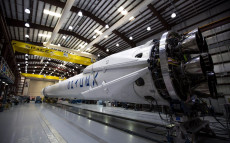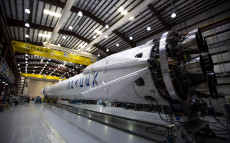- pathfindersAI
- Job Profile
Remote Sensing Technicians
Summary
Remote Sensing Technicians: Climbing the Career Ladder
What They Do
Remote Sensing Technicians play a vital role in the interpretation and analysis of satellite and aerial imagery, serving as the unsung heroes of geographical and environmental sciences. These professionals harness advanced technologies to capture and process data from remotely sensed images. The critical information obtained is utilized across various fields, including climate science, urban planning, agriculture, and defense. Remote Sensing Technicians ensure the accuracy and reliability of data, which can influence significant scientific and economic decisions globally.
Job Responsibilities
The responsibilities of Remote Sensing Technicians are multifaceted and require a high level of technical expertise. They are tasked with operating sophisticated remote sensing equipment and software to acquire, process, and analyze spatial data. This entails working with Geographic Information Systems (GIS), calibrating instruments, and integrating data from various sensors. Additionally, technicians must prepare technical reports, visualize data for stakeholders, and collaborate with scientists and engineers to translate raw data into actionable insights. Quality control, troubleshooting equipment issues, and staying updated with technological advancements are also key responsibilities for ensuring data precision and integrity.
Essential Skills
Excelling as a Remote Sensing Technician demands a blend of strong technical skills and analytical acumen. Proficiency in remote sensing and GIS software such as ENVI, ERDAS Imagine, and ArcGIS is fundamental. An understanding of programming languages like Python or R enhances a technician’s ability to manipulate and analyze large datasets efficiently. Attention to detail, critical thinking, and problem-solving aptitude are essential, as these professionals must identify anomalies and ensure data accuracy. Effective communication skills are necessary for interpreting complex data to non-technical stakeholders. Moreover, a good grasp of statistical and mathematical principles is crucial, as these are often applied in data analysis and interpretation.
Educational Pathways
Aspiring Remote Sensing Technicians can embark on their careers through various educational pathways. A bachelor's degree in geography, environmental science, geomatics, or a related field provides a robust foundation. Courses in remote sensing, GIS, cartography, and computer science will be particularly beneficial. Many colleges offer specialized programs or certifications in remote sensing and GIS, which can significantly enhance employability and expertise. Internships and practical training opportunities are invaluable for gaining hands-on experience with remote sensing technologies and software. Those aiming for advanced roles might consider pursuing a master's degree, which delves deeper into specialized techniques and research methodologies.
Career Prospects
The career prospects for Remote Sensing Technicians are promising, thanks to the expanding reliance on geospatial technologies across various disciplines. Government agencies, research institutions, environmental organizations, and private sector companies, including agriculture, defense, and urban planning firms, actively seek skilled technicians. As technology evolves, new opportunities emerge in innovative sectors like autonomous vehicle navigation, disaster management, and smart city planning. According to labor statistics, the demand for these professionals is projected to rise, reflecting the growing importance of spatial data in decision-making processes. With experience, technicians can advance to senior positions, project management roles, or specialize further in niche areas within remote sensing.
Conclusion
In conclusion, Remote Sensing Technicians are pivotal in unlocking the potential of spatial data to address some of the most pressing challenges faced by society today. Their work spans multiple critical sectors, influencing decisions that affect the environment, security, and urban development. The field demands a strong technical foundation, coupled with analytical and problem-solving abilities. Educational pathways are diverse, ranging from bachelor’s degrees to specialized certifications and advanced degrees. The career prospects are not only lucrative but also filled with opportunities for innovation and advancement. For individuals passionate about technology and the environment, a career as a Remote Sensing Technician offers a fulfilling and impactful professional journey.
Video
Compensation
| State | Median Salary | Median Hourly | Positions |
|---|---|---|---|
| AL | 44,450 | 21.37 | 270 |
| AK | 67,110 | 32.27 | 230 |
| AZ | 47,150 | 22.67 | 580 |
| AR | 57,840 | 27.81 | 120 |
| CA | 71,510 | 34.38 | 13,040 |
| CO | 58,870 | 28.30 | 1,300 |
| CT | 63,390 | 30.48 | 340 |
| DE | 60,730 | 29.20 | 70 |
| DC | 67,960 | 32.68 | 190 |
| FL | 41,850 | 20.12 | 2,800 |
| GA | 60,980 | 29.32 | 1,990 |
| HI | 52,000 | 25.00 | 710 |
| ID | 46,140 | 22.18 | 670 |
| IL | 58,360 | 28.06 | 850 |
| IN | 51,540 | 24.78 | 850 |
| IA | 39,090 | 18.79 | 1,110 |
| KS | 61,690 | 29.66 | 870 |
| KY | 51,790 | 24.90 | 840 |
| LA | 46,720 | 22.46 | 1,680 |
| ME | 58,630 | 28.19 | 340 |
| MD | 64,660 | 31.09 | 4,000 |
| MI | 52,320 | 25.15 | 970 |
| MN | 45,830 | 22.04 | 750 |
| MS | 53,990 | 25.96 | 370 |
| MO | 51,730 | 24.87 | 1,750 |
| MT | 46,700 | 22.45 | 180 |
| NE | 49,600 | 23.85 | 340 |
| NV | 48,200 | 23.17 | 240 |
| NH | 56,600 | 27.21 | 340 |
| NJ | 49,210 | 23.66 | 1,390 |
| NM | 51,970 | 24.98 | 200 |
| NY | 61,130 | 29.39 | 8,280 |
| NC | 64,650 | 31.08 | 1,570 |
| ND | 60,320 | 29.00 | 180 |
| OH | 44,480 | 21.38 | 2,150 |
| OK | 64,730 | 31.12 | 530 |
| OR | 57,850 | 27.81 | 950 |
| PA | 58,180 | 27.97 | 2,770 |
| RI | 55,660 | 26.76 | 130 |
| SC | 63,790 | 30.67 | 1,230 |
| SD | 41,170 | 19.79 | 50 |
| TN | 45,910 | 22.07 | 460 |
| TX | 48,110 | 23.13 | 5,590 |
| UT | 47,440 | 22.81 | 1,380 |
| VT | 60,840 | 29.25 | 110 |
| VA | 50,270 | 24.17 | 2,210 |
| WA | 69,950 | 33.63 | 900 |
| WV | 58,340 | 28.05 | 190 |
| WI | 46,370 | 22.29 | 630 |
| WY | 54,460 | 26.18 | 100 |
Similar Occupations
In this area you will find other occupations that are close to the one you were viewing in tasks, knowledge and work environment. If the primary job profile you are viewing isn't quite to your liking, take a look around and see what else is available.
Basic and Premium Accounts have more alternative occupations available than the Free account.

Aerospace Engineering and Operations Technologists and Technicians - 17-3021.00
Aerospace Engineering and Operations Technologists and Technicians assist in the design, testing, and maintenance of aircraft, spacecraft, and related systems and equipment. They utilize technical skills and advanced tools to ensure the functionality, safety, and efficiency of aerospace technologies and operations.
-
$77,830/yr
Median Pay -
10,640
Number of Jobs

Aerospace Engineers - 17-2011.00
Aerospace Engineers design, develop, and test aircraft, spacecraft, and related systems and equipment to ensure they meet safety, performance, and regulatory standards. They work on a range of areas including structural design, navigation systems, propulsion, and aerodynamics to advance aviation and space exploration technology.
-
$130,720/yr
Median Pay -
66,660
Number of Jobs